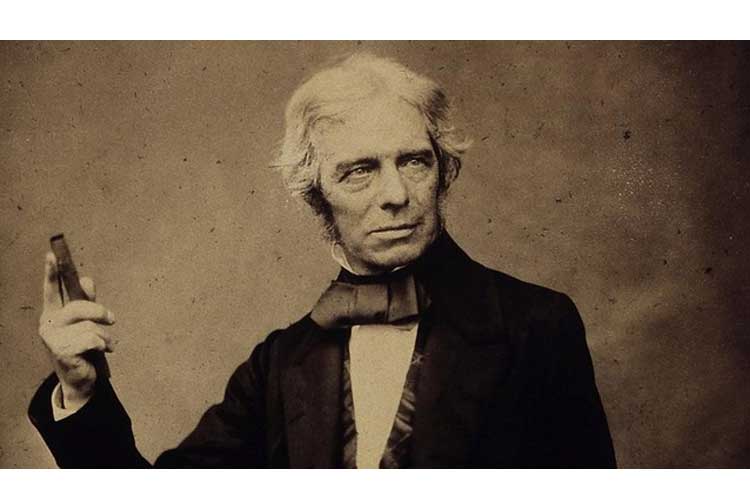Biography of the Inventor of the Internal Combustion Engine and the History of its Discovery – Biographythe inventor of the internal combustion engine is a topic that needs to be known, especially for school students. In addition, the history of its discovery can also be studied.
Many people wonder who the figure behind the invention of the internal combustion engine is, which has contributed most to technological progress in the modern era.
Moreover, the engine is an important part of various machines and vehicles around the world, from motorcycles to large commercial aircraft. So, who is the person who discovered it?
Inventor of Internal Combustion Engine
Nikolaus August Otto (10 June 1832 – 26 January 1891) wasinventorcombustion engine. The engine that was created is the engine used in vehicles today.
Nicolaus Otto was a German engineer who succeeded in developing a compressed gas-fueled internal combustion engine, resulting in the modern internal combustion engine.
The name Nicholas Otto is indeed the most famous and prominent name in the field of engineering and technology. He plays a very influential role in the modern era today, especially in the field of mechanical engineering because of his innovative invention, namely the internal combustion engine.
Profile Nicholas Otto
When it comes to significant technological advances towards modern engineering, Nikolaus Otto’s profile has a well-deserved place in the annals of history.
- Nama lengkap: Nikolaus August Otto
- Place of residence: Holzhausen an der Haide, Germany
- Date of birth: June 14, 1832
- Died: Cologne, Germany, January 26, 1891 (age 58)
- Zodiac: Gemini
- Nationality: German
- Profession: Engineer
- Known inventions: Internal combustion engine
- Parents: Phillip Wilhelm Otto (father)
- Siblings: Wilhelm Otto
- Wife: Anna Gossi
- Anak: Gustav Otto
Nikolaus Otto is a person who has high tenacity and perseverance in achieving his goals.
Despite the many challenges he faced throughout his life and career, he remained steadfast in pursuing uncharted innovations.
Born as one of six children into a humble family, Nikolaus August Otto’s early life is indeed a tale of dedication, hopes and dreams.
Born in Germany, Nikolaus Otto worked several jobs before becoming a famous inventor, from clerk to salesman .
Who would have thought, from an early age, he had a great interest in the world of machines.
Biography of Nikolaus Otto
Nikolaus August Otto was born in a small village in Holzhausen, Germany on June 10, 1829.
His father was Phillip Wilhelm Otto who worked as the head of the post office in Nikolaus Otto’s birthplace.
Shortly after Otto was born, his father died. His mother took over the role of raising Otto on her own.
During his school days, Nikolaus Otto was a very accomplished student. His mother then planned for Otto to continue his studies in engineering.
Unfortunately, in 1848, the German Revolution occurred, causing the economy to collapse. The family’s difficult economic conditions made his mother want young Otto to become a trader rather than continue his education.
Otto, who was studying at high school at that time, had to leave school.
After leaving school, Otto got a job as a clerk in a grocery store near the city of Frankfurt, Germany.
Then, with the help of his brother Wilhelm, Otto switched professions to become a salesman , namely distributing food ingredients to a number of shops along the western border of Germany.
Otto’s travels as a salesman took him to the German border with France and Belgium. He even made it to Cologne, Germany in 1859.
In that area, he met Anna Gossi who later became his wife.
Nikolas August Otto died in 1891 in Cologne, Germany.
This inventor who changed the world left behind a wife named Anna Gossi and a son named Gustav Otto.
However, he died in a state where his family was rolling in wealth thanks to the machine he invented.
History of the Discovery of the Internal Combustion Engine
In 1860, a man named Jean Lenoir mademachineThe world’s first internal combustion engine that was later mass-produced. However, the Lenoir engine used gas power.
Nikolaus Otto then saw the potential of the Lenoir engine. He thought that the future development of the internal combustion engine would depend on its fuel source.
He thought it would be very useful if the internal combustion engine used liquid fuel.
Otto then designed a carburetor to make the engine move. Together with his brother, Otto filed a patent in 1861.
However, the development of the engine carried out by Otto required quite a long time.
This is because he experienced a lack of development funds and a lack of knowledge about the machine.
However, he still believed that one day the machine he invented would surpass the machine invented by Lenoir.
In 1861, Otto commissioned instrument maker Michael Zons to design an instrument for a combustion engine like that built by Lenoir.
Next, Otto conducted a series of preliminary experiments with the engine to reduce the shock load on the piston at the start of combustion.
In 1862, Zons and Otto built a four-cylinder engine while Lenoir only had two cylinders. However, it failed after several attempts.
In 1863, Otto asked Zons to design a gas-powered engine with a power of one and a half horsepower.
After the test was successful, Otto patented the results of his combustion engine invention.
Not long after, he and Eugena Langen built a small factory and perfected his design. In 1867, Nikolaus Otto’s invention was awarded a medal at the World Fair in Paris. Following the award, sales of its machines began to skyrocket and the company’s profits increased.
In 1872, Otto then employed Gottlieb Daimler, an engineer known to have extensive experience in factory management to streamline the production of his engines. Despite the abundant income from his invention, he remained ambitious to create a four-stroke engine that compressed a mixture of oil and air before combustion occurred.
In May 1876, Otto designed the 4-Stroke Engine and successfully obtained a patent a year later and sold 30,000 engines within 10 years.
Ironically, in 1886, Otto’s 4-Stroke Engine was dragged into trouble. A Frenchman named Alponse Beau de Rochas had a similar idea in 1862 and had patented it. However, Otto had little influence over it.
The combustion process in the engine created by Otto was the result of careful thought.
This type of engine was originally used to power motorboats and motorbikes, and is now used to power cars and other vehicles.
The engine was also commonly used in various industries, even all airplanes at that time were powered by a burner that worked according to Otto’s design.
Thus, that is the biography of the inventor of the internal combustion engine, Nikolaus August Otto, complete with the history of his discovery.





